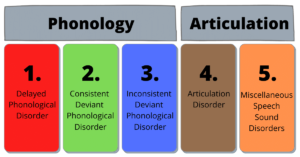Success with Speech Sound Disorders
Make your speech therapy soar by understanding what unintelligible really means.
Packed with video examples, therapy materials, and reference charts, this presentation will arm you with ways to better define your students and give you intervention strategies to best match their specific deficit. Follow a pilot study where children from two caseloads were better diagnosed and treated using strict criteria for the types of errors they were producing.
Overcoming Behavioral Roadblocks in Intervention
Challenging behaviors can impede progress in speech therapy. We will discuss the evaluation of behaviors that impact communication development and provide research-based intervention strategies to guide speech-language pathologists in developing effective treatment plans. We will include case studies of clinical interventions that improve communication in children with behavioral needs.
Language Intervention Strategies for Monolingual and Bilingual Children
Learn how to evaluate the effectiveness of your therapy activities to 1) account for individual difference and 2) increase therapy outcomes. Cultural differences, language influence, and socio-economic issues can impact how successful we are in therapy. However, you can alter existing therapy materials and goals in order to take cultural differences and classroom needs into account.
Increasing Parent and Teacher Involvement
Involving caregivers and teachers in the therapeutic process is a major component of successful therapy. However, social, familial, personal, and environmental factors can make caregiver and teacher involvement difficult.
In this course we identify the benefits of family involvement and share five research-based strategies (SMILE: Sign, Model, Imitate, Label, and Expand) for improving communication and interactions with families and teachers.
Evaluating Students from Diverse Populations
Increase your confidence when making diagnostic decisions for bilingual students. This course provides tools for interpreting scores when your student is not well represented in the test norms and great information for obtaining language samples and other informal testing procedures.
Ethical Considerations with CLD Populations
Successfully navigate contentious situations when confronted with an ethical dilemma. Learn about the origin of ethics, how professions address ethical issues, and dissect intriguing case studies supplied by speech pathologists. In this presentation we consider the ASHA Code of Ethics, its relation to multicultural populations, and numerous case studies of SLPs in the field.
Effectively Evaluating Young Children
Join us as we discuss the limits and benefits of formal testing and learn how to effectively evaluate young children. We use examples of many evaluation tools (HELP, CELF, PLS, BDI) to show how to evaluate test items for bias. Improve your clinical judgment an increase your confidence in diagnosing this population.
Difference or Disorder: Speech Development in Diverse Populations
Learn whether certain articulation errors that a bilingual child produces should be counted as incorrect. The sound systems of a bilingual child’s two languages interact in predictable ways. Using Spanish and English as an example, this course provides a framework for identifying “errors” that are typical and those that are atypical.
Difference or Disorder: Language Development in Diverse Populations
Successfully separate language differences caused by second language influence from true disorder. Learn about language structures that are affected by bilingualism as well as developmental errors, cross-linguistic errors, and atypical errors. By understanding how language structures vary and can influence one another, an SLP can make a more informed decision when determining whether a bilingual child is presenting with a language difference or a language disorder.
Collaborating with Teachers to Make Great Referrals
Learn how to collaborate with teachers in the referral process to reduce caseload work, better identify students, and reduce special education spending. The simple and useful tools provided in this presentation can also help reduce your workload, decrease unnecessary referrals, and increase the support for your campus.






